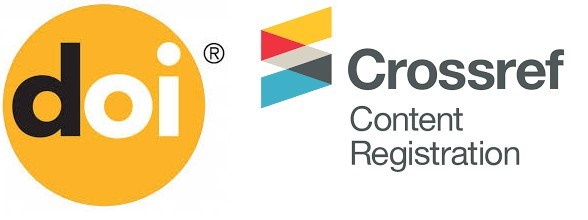The Influence of Self-Efficacy on Understanding Arabic Syntax in Arabic Language Education Study Program Students, Jambi University Class
DOI:
https://doi.org/10.32699/liar.v8i1.7002Keywords:
Self-Efficacy, Understanding Arabic Syntax, InfluenceAbstract
This research aims to analyze the influence of self-efficacy on understanding Arabic syntax among students of the Jambi University Arabic Language Education Study Program Class of 2022. This research was conducted at FKIP Jambi University in November 2023-March 2024. Research data was obtained by distributing questionnaires/ questionnaire and distributed test questions to students of the Jambi University Arabic Language Education Study Program Class of 2022. After obtaining the data, the data was analyzed using quantitative research with a correlational type of research. The results of the research show that there is an influence and relationship between the variable self-efficacy and the variable understanding Arabic syntax with a moderate degree of relationship and a positive form of relationship. Knowing that N = 38, the value of r table is at the 5% level or 0.05 = 0.320. As is known, data is said to be correlated if r count > r table and p value sig. < 0.05. It is known that the calculated r is 0.459 > 0.320 and the significance value is 0.004 < 0.05. Then, based on the calculation of the determinant coefficient, the magnitude of the contribution of self-efficacy and understanding of Arabic syntax is obtained based on the calculation of KD = r2 x 100%, then, (0.459)2 x 100% = 21.06% and the remaining 78.94% is influenced by other factors not included in this study. Based on the results of these data calculations, Ha is accepted and Ho is rejected, so that a positive and significant influence is obtained between self-efficacy and the variable understanding of Arabic syntax.
References
Arikunto, S. (2010). Research Procedures a Practical Approach. Jakarta: Rhineka Cipta. Journal
Bakar, RM, Usmar, APM, & Makassar, UN (2022). Growth Mindset in Improving Mental Health for the Zoomer Generation. Science and Technology: Journal of Community Service Results, 2(2), 122-128. Journal
Bandura, A. 1997. Self-Efficacy in Changing Societies. United Kingdom:Cambridge University Press. Book
Fitriyah, LA, Wijayadi, AW, Manaksia, OA, & Hayati, N. (2019). Instilling Self-Efficacy and Emotional Stability. LPPM Unhasy Tebuireng Jombang, (55). Journal
Mustakim, M. (1994). Javanese language interference in Indonesian language newspapers. Center for Language Guidance and Development. Journal
Nasution, S. (2017). Introduction to Arabic Linguistics. CV. ARABIC ORAL. Journal
Novrianto, R., Marettih, A. K. E., & Wahyudi, H. (2019). Validitas konstruk instrumen general self efficacy scale versi Indonesia. Jurnal Psikologi, 15(1), 1-9. Journal
Pantu, A., & Kau, S.A. (2011). Arabic syntax: a contrastive analytical study with Indonesian. Sultan Amai Press. Book
Ponny, M.R. (2022). LINGUISTICS FROM THE PERSPECTIVE OF IBNU JINNI AND FERDINAND DE SAUSSURE. Al-Mashadir, 2(01), 40-56. Journal
Saifuddin, A. (2022). Basic General Psychology. Prenada Media. Book
Schwarzer, R., & Jerusalem, M. (1995). Generalized self-efficacy scale. J. Weinman, S. Wright, & M. Johnston, Measures in health psychology: A user’s portfolio. Causal and control beliefs, 35, 37. Psychological Scale
Sugiyono. 2022. Quantitative, Qualitative and R&D Research Methods. Alphabeta, Cv. Book
Widiasworo, E. (2019). Compiling quantitative research for theses and theses (Vol. 140). Araska Publishers. Book
Wirawan, J., Saidi, AI, & Kusumowidagdo, A. (2022). SELF-EFFICACY IN GENERATION Z IN SURABAYA FROM A THERAPEUTIC PHOTOGRAPHY PERSPECTIVE. Journal of Art and Design: Scientific Journal of the Master of Design, 5(1), 1-16. Journal
Downloads
Published
Issue
Section
License
Authors who publish with this journal agree to the following terms:
a. Authors retain copyright and grant the journal right of first publication with the work simultaneously licensed under a Creative Commons Attribution-ShareAlike 4.0 International License. that allows others to share the work with an acknowledgement of the work's authorship and initial publication in this journal.
b. Authors are able to enter into separate, additional contractual arrangements for the non-exclusive distribution of the journal's published version of the work (e.g., post it to an institutional repository or publish it in a book), with an acknowledgement of its initial publication in this journal.
c. Authors are permitted and encouraged to post their work online (e.g., in institutional repositories or on their website) prior to and during the submission process, as it can lead to productive exchanges, as well as earlier and greater citation of published work (See The Effect of Open Access).












